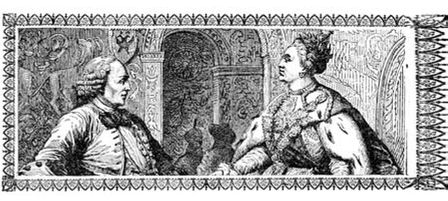8
St. Petersburg, Russia Catherine the Great
PETER THE GREAT MAY HAVE BUILT THIS CITY, BUT CATHERINE THE Great made it sing. With its sumptuous museums and regal cathedrals, its wide boulevards and canals, St. Petersburg is Russia’s most romantic city. Guidebooks call it a “Slavic Venice,” but after a few days here, you’ll agree that Venice is actually more of an “Italian St. Petersburg.”
Born a German princess and educated by French governesses, Catherine the Great found her “in” to Russia’s royal family by marrying the dreadful Grand Duke, Peter III (not “The Great”). Impotent and immature, Peter didn’t consummate their union for twelve long years. Within months of his accession to the throne, Catherine had him overthrown and became Tsarina of Russia in 1762. Over the next thirty years, she added 200,000 square miles to Russian territory and made it a dominant power. An intellectual, she corresponded with Voltaire and Diderot and wrote memoirs, fiction, and comedies. She also founded the Smolny Institute for noble young ladies. Because of this, Europe considered her an “enlightened” monarch, but at home, she was more of a tyrant, censoring publications and exiling her critics. She was also a brutal mother to her sons, Paul and Orlov, preferring instead her eldest grandson, Alexander (who eventually became Tsar Alexander I). To this day, wild rumors circulate about the cause of Catherine’s death—most of which involve her supposedly voracious sexual appetite (and a horse). But historians say she merely had a stroke while taking a bath and never regained consciousness.

One of Catherine’s finest legacies is the Hermitage, whose contents Russians rattle off like baseball stats: 117 staircases lead to 350 halls with 1,057 rooms, in which 60,000 drawings and 15,000 paintings hang side by side, along with 12,000 sculptures and thousands of archaeological monuments. But even those daunting numbers won’t prepare you for wall after wall covered in gold leaf and malachite, floors inlaid with marble, and ceilings dripping with chandeliers. And then there’s the art, including classics by Rembrandt, Da Vinci, Michelangelo, Renoir, Picasso, Gaugin, and Matisse. Peter the Great started this unparalleled collection, but Catherine bought most of the key paintings and built the Winter Palace to store them.
To really get a sense of Catherine the Great, visit her palace, Yekaterininsky Dvorets, in nearby Pushkin. Every imperial family from Peter the Great through the Romanovs spent their summers in this town, previously known as Tsarskoye Selo, or Tsar’s Village. Done in Russian baroque, the palace features a bright-turquoise exterior that has white columns with gold moldings and sassy garlic-shaped domes. Inside, one room is covered with more than a ton of amber and glows in a dozen shades of yellow. Also explore the gardens, which are landscaped with waterfalls, ponds, pavilions, and bridges. The pyramid at the far end of the pond is said to contain Catherine’s beloved greyhounds.
Pushkin is located fifteen miles south of St. Petersburg; to get here, take the commuter train from Vitebsk Station or a minibus from Moskovskaya Metro.
After paying homage to Catherine, meet her descendants. Gone are the “wild east” days of the early ‛90s, when Mafiosi checked their guns in at the door, but fear not—Russian nightclubs still get rowdy. Hotspots change constantly, so it’s best to read the St. Petersburg Times or, better yet, consult a Russian friend or expat. One nightclub of note is Tri El, quite possibly the first lesbian club in the nation’s history. Late-night drag king shows are held here most nights of the week, along with live bands on Thursdays, and therapists offer free consultations. Tri El is located on No. 45, 5-aya Sovetskaya Ulitsa, near the Ploshchad Vosstaniya metro. Male friends can (and happily will) tag along on Thursdays and Fridays, and straight women will have fun, too.
RECOMMENDED READING
Catherine the Great by Henri Troyat, translated by Joan Pinkham

